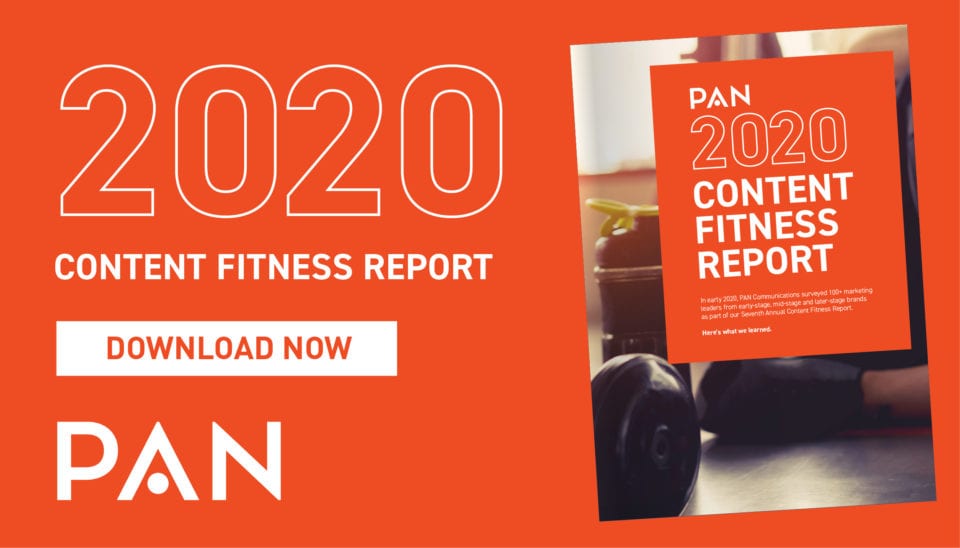As experts like to remind us, the COVID-19 health crisis will have a beginning, a middle and an end. So, where are we in the cycle today?
The answer is: it’s hard to tell. While some regions are still focused on flattening the curve, others are beginning to reopen their economies. Meanwhile, some communities are just beginning to feel COVID’s impacts. This diversity of experience can make it difficult for communications professionals to navigate engagement opportunities and risks.
Brand storytelling in our “new normal” has become more complex, requiring a sensitive and personalized approach to achieve the best outcomes. At PAN, we’ve found it helpful to assess where we are in the news cycle as we plan individual campaigns, taking target audience experiences and pain points into account each time. Most importantly, brands must balance self–promotion with self–awareness at this time. Below, we provide guidance on how to do just that.

The Beginning: Community Impact
As COVID-19 discussions began in early March, many brands were concerned about whether and how to engage externally. Their employees, customers and industries were being impacted; was it insensitive to continue communicating via brand channels? What was appropriate and safe to say about an event that was evolving every hour of the day?
While many brands chose to sit idle in the first few days of the COVID-19 health crisis, it soon became obvious that their audiences were looking for them to engage. More specifically, they wanted to know what brands were doing to help impacted communities.
One PAN client who entered discussions early in support of its customer community is Toast. The restaurant industry became the face of COVID-19 economic crisis overnight, as the impacts of stay-at-home orders reduced restaurant sales by up to 85% in some regions, causing major job loss. In response, Toast launched its Rally for Restaurant campaign, focused on providing the funds, technology and advice restaurants would need to acclimate to this new environment. Communications campaigns shifted to focus almost completely on Toast’s customer audiences, providing a beacon of brand leadership and support amid the tumult. Similarly, brands have an opportunity to pivot focus to customer experiences, insights and needs as recovery approaches in this next phase.
To better understand how journalists are approaching storytelling amidst COVID-19, read our two recent Q&As:
- How Are US Reporters and Journalists Adjusting to the Changing Media Landscape?
- How Are UK Reporters and Journalists Adjusting to the Changing Media Landscape?
The Middle: Customer and Partner Champions
As the COVID-19 news cycle narrows its focus on a few key players tasked with supporting our healthcare recovery through testing, treatment and research, brands have an opportunity to spotlight broader recovery efforts amid customers and partners through thought leadership. The work brands are doing with and through these audiences offers rich and emotive content for storytelling. Audiences want to understand the issues, opportunities and challenges their peers are seeing as we collectively navigate our recovery.
To use the above example of Toast, restaurants on the front lines of our recovery effort can offer valuable insights on consumer confidence, regulatory challenges and more. Toast is uniquely positioned to help promote those stories and spur resource sharing as restaurants across the country come back online. Another PAN client, Liberty Mutual, recently spotlighted the incredible work and experiences of its non-profit partners at St. Francis House and Boston Healthcare for the Homeless in its effort to shed light on COVID-19’s outsized impact on Boston’s vulnerable populations.
The power of customer and partner insights in brand storytelling is undeniable. As brands launch their next phase of communication around COVID-19, they should take the opportunity to speak through these communities.
The End: Corporate Reflections
The final chapter of this story will engage brands directly for their reflections on COVID-19’s impact to their business health and future plans.
While public companies are tasked with sharing these reflections now in the context of first quarter earnings, private brands have the benefit of time on their side. Most public companies are erring on the side of caution – noting that they expect COVID-19 will impact their business in ways that aren’t fully visible at this time. There’s wisdom in that response. If you are a private company, remember that there is no rush to engage media in conversations on corporate health. Hindsight is 20-20 and chances are brands don’t have that yet when it comes to the business decisions they are making in this moment.
How will we know when to re-engage? Look for steady signs of economic recovery in the industries you serve and in your own business. Set milestones and performance metrics by which to measure your recovery and the success of business pivots. Also, spend time evaluating who your best brand advocates are and build this bench of customers, employees, influencers and media members who you feel will tell your brand’s story in a positive or balanced way.
In the meantime, focus your brand storytelling on the good you are doing for and through your employee, customer and partner communities. The silver lining of this experience is the genuine human connection it creates – and there is no more powerful ingredient for great storytelling than that.
To discover how your content strategy can better meet the needs of your customers, download our 2020 Content Fitness Report for data and insights.



